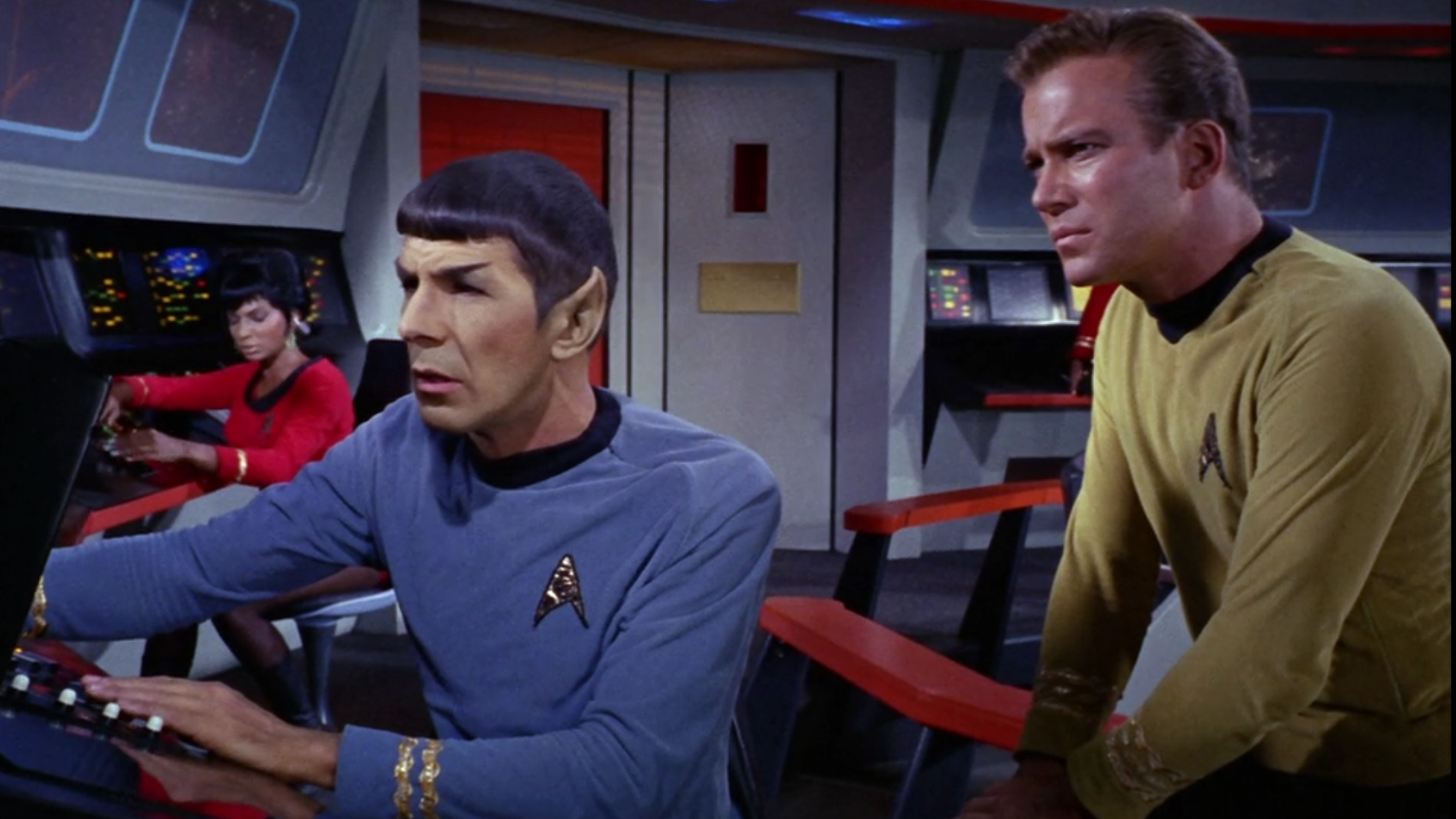No fictional character influenced my youth more than Mr. Spock. I identified with the Vulcan’s cool, calculating ways, and adopted analytical attitudes that pushed back emotions. That’s still true as an adult. Surely I am not alone. You, too? That’s my reaction to news today about the passing of Leonard Limoy, at age 83.
In viewing “The Original Series” on Netflix, Star Trek looks a little hokey to me now. The series is heavily influenced by Sixties television era’s demands, which pounded the octagon-shaped TOS into a square action-drama-method hole. Consider the color of the uniforms and panels around the bridge, which surely fit in with NBC Peacock’s broadcasting “In Living Color”. Gene Roddenberry’s “Wagon Train to the Stars” is entertainment-period formulaic, which looks so unsophisticated now. Nevertheless, the science fiction storytelling was groundbreaking for the time, and transcends many of the imposed constraints.
Highly Logical
The best episodes, particularly from the first season, play emotions against logic, such as (in airing order): “Where No Man Has Gone Before“, “The Naked Time“, “This Side of Paradise“, or “City on the Edge of Forever“. I found third-season opener “Spock’s Brain” to be an embarrassing production, when aired on Sept. 20, 1968, and worse when watched again 2015—not the best showcase for Nimoy. Still, Spock is the most consistent and believable of the core cast; the actor is major reason.
He was nominated for Emmys all three years the original Trek broadcast, but he didn’t win. Regardless, nominations are a distinction for the series, as no other actor was ever nominated. Spock is among the most original of characters created for television over past sixty years. Much of the credit belongs to Nimoy.
My favorite Star Trek TOS book, Ishmael, published in May 1985, is all about Spock. It’s a story worthy of a script and a role I would want Leonard Nimoy to play. Maybe in an alternate universe he did just that. I don’t read much printed anymore, favoring digital, but maybe the library or used bookstore has a copy worth getting this weekend.
Journey to the Stars
The first Star Trek episode aired on Sept. 8, 1966. But I wouldn’t discover the series, at age 7, until a Sunday afternoon in early 1967. Back home in Aroostook County, there were two channels broadcasting English, one from Presque Isle, Maine, and the other from Saint John, New Brunswick, Canada.
The American station, WAGM, was unique at the time—the only broadcaster reaching a region one-fifth of the state. Networks ABC, CBS, and NBC made an exception and permitted the station to be an affiliate with all three, rather than the typical one. WAGM’s program director chose which shows to air from which networks. Star Trek wasn’t among them.
On that brisk Sunday, the CBC channel broadcast the most exciting movie I had ever seen, and only 30 minutes remained to watch. As the credits rolled, the announcer said: “Tune in next week for the continuing adventures of Star Trek”. I would have missed the show if not for CBC across the border. Oh, Canada! Star Trek became a family ritual, every Sunday afternoon at 2 p.m., as my three sisters and I huddled around the television together.
Leonard Nimoy and character Spock affected millions upon millions of lives. My social networks are flooded with remembrances. It’s Nimoy’s endearing legacy and Star Trek’s—that we can rise above petty emotions and be more something better. Mr. Spock might react differently, finding all this sentiment to be “highly illogical”. Hey, we’re just being human.
